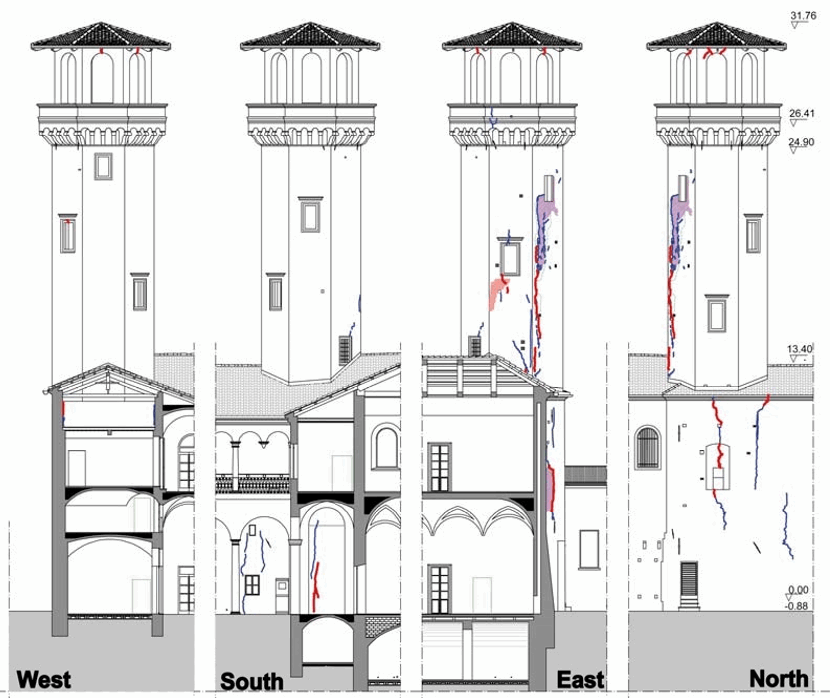Cardani1, L. Binda2, P. Condoleo3 and A. Anzani4
- Assistant Professor, Department of Structural Engineering, Politecnico di Milano, Italy, cardani@stru.polimi.it
- Full Professor, Department of Structural Engineering, Politecnico di Milano, Italy, binda@stru.polimi.it
- Assistant Professor, Department of Structural Engineering, Politecnico di Milano, Italy, condoleo@stru.polimi.it
- Associate Professor, Department of Structural Engineering, Politecnico di Milano, Italy, anzani@stru.polimi.it
ABSTRACT
An experimental investigation aimed to the evaluation of the state of damage of historic brick masonry structure, referred to as The Bellevue Tower, is presented. The tower was built at the beginning of the 16th century as part of the Ferrero Palace-Masserano-La Marmora, on the highest part of Biella, in the Italian region of Piedmont, and became the city landmark. The tower has a square plan for the first three lower floors from the ground level and an octagonal plan for the remaining four floors, ending with a stone-decorated cantilevered crowning.
The tower was a part of a public Palace from which it was separated, in terms of property, at the beginning of the 20th century. This separation altered the use and conservation path of the tower, that nowadays suffers from a severe state of damage and requires an immediate intervention and rehabilitation of the masonry structures and overhanging elements for safety reasons.
A methodology is put forward for combining laboratory and non-destructive testing methods with a monitoring system in order to evaluate the potential for conservation of this historic tower and its sustainability, in view of an effective intervention design.
KEYWORDS: brick masonry, flat jack test, monitoring, NDT, tower
C5-3



